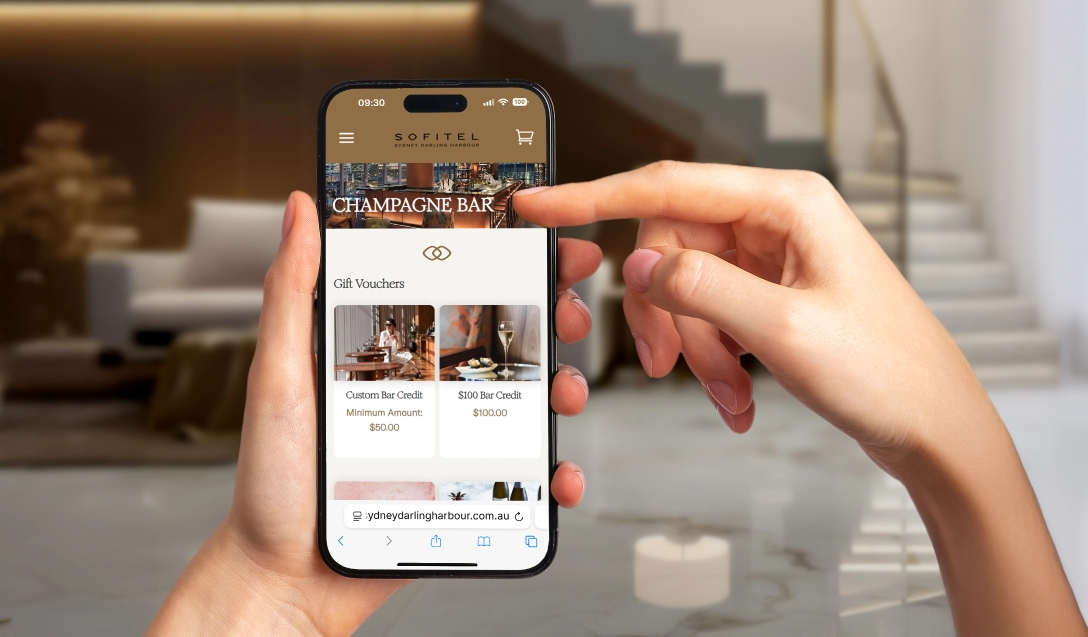Now, as more hotels are being consolidated into centralised brand.com platforms, many are seeing the same trend: a noticeable dip in voucher sales.
On the surface, this feels like a loss of control. Less immediate visibility, less local flexibility, but not less opportunity.
But here’s the truth: moving to brand.com doesn’t mean you have to accept reduced voucher sales. In fact, with the right approach, you can not only recover lost revenue but create a system that consistently grows voucher sales, even without a microsite.
The Unintended Consequence of Centralisation
That means:
- Vouchers can be harder to find in navigation.
- Unique local experiences may be presented in a more standardised way.
- Search visibility for “gift voucher + [your city]” benefits from a little extra attention when microsites are no longer in play.
The important thing to remember is this: the demand is still strong. Guests are actively searching. Locals are looking for dining, spa, and stay vouchers every day. What’s changed isn’t the appetite for vouchers — it’s simply the way hotels need to position and capture that demand. With the right strategy, this shift becomes an opportunity to streamline and grow.
Reframing the Opportunity
Think of it like this:
- Brand.com is your billboard. It sets the tone and tells the world who you are.
- Your voucher strategy is your storefront. It’s where the real transaction happens, and you can still own that.
The playbook has shifted, but the fundamentals haven’t: visibility, relevance, and convenience drive voucher revenue.
5 Strategies to Grow Voucher Sales on Brand.com
1. Create Direct Voucher Pathways
Don’t rely on guests to dig through brand.com navigation. Bring them straight to your voucher checkout:
- Add direct links in your Google Business Profile (vouchers can be a call-to-action button).
- Push voucher links in email marketing, especially around seasonal campaigns.
- Feature links prominently across social media posts, ads, and bios.
Make it effortless. The fewer clicks, the more conversions.
2. Leverage Local SEO & Answer Engines
Microsites once gave hotels strong local SEO visibility. It’s still possible, but you must approach it differently:
- Optimise your Google Business Profile for voucher searches.
- Use schema markup (Answer Engine Optimisation) to ensure AI-driven search engines pick up your offers when people ask, “Where can I buy a hotel gift voucher in [city]?”
- Create local content — blogs, press releases, event tie-ins — that link directly to voucher pages.
This isn’t about beating brand.com. It’s about creating a parallel visibility track that feeds voucher traffic straight into your engine.
3. Own the Seasonal Calendar
Seasonal peaks are non-negotiable for voucher sales. Mother’s Day, Valentine’s, Christmas, these windows drive the highest-intent buyers.
Without a microsite, it’s even more important to own the calendar locally:
- Launch targeted campaigns 4–6 weeks before key events.
- Use countdowns, urgency tactics, and limited-time bundles.
- Remind your audience through social, in-room signage, and local PR.
Remember: people aren’t buying a voucher; they’re buying the emotion of giving an experience. The timing matters as much as the offer.
4. Double Down on Local Marketing Channels
Even with centralised brand.com, hotels still control their local marketing levers:
- Email lists: Segment past guests and locals for voucher-specific campaigns.
- Social media: Highlight vouchers in posts, reels, and stories, especially with seasonal or experiential framing.
- On-property touchpoints: Upsell vouchers at reception, spa desks, and restaurants.
These aren’t “extras” — they’re your most direct pathways to conversion.
5. Measure, Optimise, Repeat
The beauty of voucher platforms like HyperGift is the data. You can see exactly which campaigns, channels, and seasons deliver the most revenue.
Use that insight to refine your playbook:
- Which email subject lines drove the most clicks?
- Did Facebook outperform Instagram for voucher campaigns?
- Was Valentine’s bigger for dining or for spa?
Over time, this creates a growth loop: each campaign gets sharper, more relevant, and more profitable.
The Bigger Picture: From Limitation to Leverage
In many ways, it encourages hotels to think more strategically about their voucher sales:
- How can we make vouchers easier to find and purchase, even without a localised site?
- How can we use our marketing channels to highlight experiences more effectively?
- How can we ensure vouchers don’t just maintain performance, but become a growing revenue stream year after year?
The shift to brand.com isn’t the end of local voucher sales — it’s a chance to innovate and refine. Hotels that embrace dedicated tools, smart marketing, and creative campaigns are already proving that brand.com can be more than a limitation; it can be a launchpad for stronger, more sustainable voucher growth.
That’s exactly where platforms like HyperGift shine: by giving hotels the flexibility, and tools they need to keep vouchers front and centre, no matter the structure of the main website.
Turning Brand.com Into Voucher Opportunity
With the right tools and a proactive marketing strategy, hotels can do more than adapt, they can excel. Brand.com isn’t a barrier; it’s a springboard.
Your guests are still searching, still gifting, still ready to buy experiences that create memories. The opportunity hasn’t disappeared, it’s waiting to be captured.
The hotels that lean into this shift with smart strategies and HyperGift will find that brand.com isn’t a limitation at all. It’s the next chapter in building stronger, more sustainable revenue streams.

